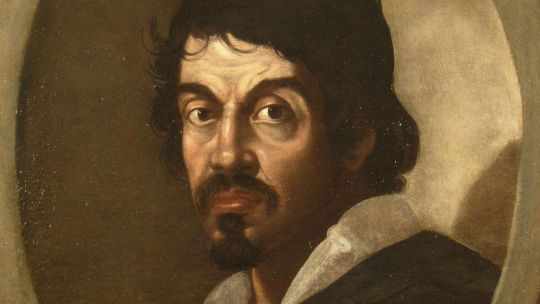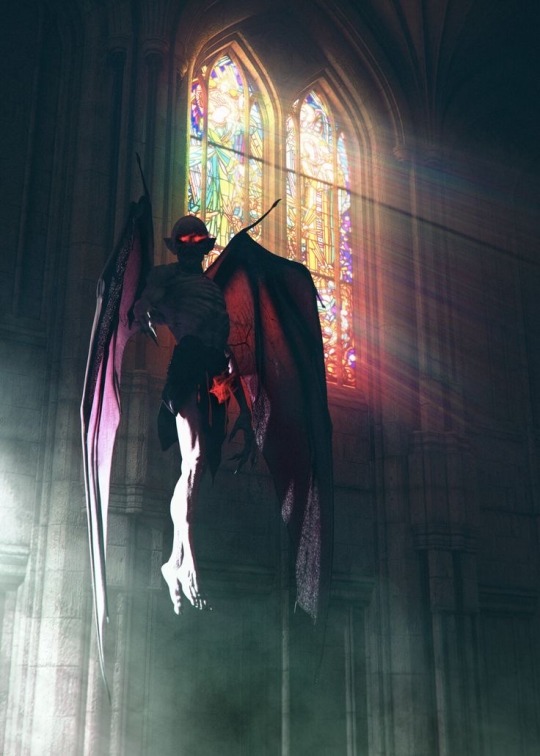#sacred and profane
Explore tagged Tumblr posts
Text

#gothique#art#goth#vintage#weird aesthetic#antique#religious#photography#religion#religioncore#sacred and profane#arte sacro#sacro#sacrosanct
24 notes
·
View notes
Photo



Verdi's Don Carlo (LA Opera, 2018)
293 notes
·
View notes
Text

Street Distraction, Turin, Italy
Copyright @aliaslittlewilliam
#street photography#street portrait#photographers on tumblr#original photographers#original photography on tumblr#lensblr#lensculture#urban life#streetlife#italia#sacred and profane#social documentary
5 notes
·
View notes
Text
youtube
Sacred and Profane by Benjamin Britten
The piece comprises eight lyrics based on medieval English poems
St Godric's Hymn
I mon waxe wod ("Foweles in the frith")
Lenten is come
The long night
Yif ic of luve can
Carol
Ye that pasen by
A Death
#english imagination#english art#albion#english music#benjamin britten#sacred and profane#medieval lyrics#english culture#20th century#Youtube
1 note
·
View note
Text

I am the link between the sacred and the profane.
0 notes
Text


swap and coworkers AUs
#good omens#crowley#aziraphale#ineffable husbands#aziracrow#read 'the sacred and the profane' after drawing the first pic#a huge mistake....#amazingly written but completely heart-wrenching#my art
849 notes
·
View notes
Text

Allegory of Sacred and Profane Love
Artist: Michele Desubleo (Flemish, 1602–1676)
Date: 1665–1675
Medium: Oil on canvas
Collection: Metropolitan Museum of Art, New York City, NY, United States
Description
This painting is one of the supreme achievements of Michele Desubleo, a Flemish artist who trained in Rome alongside his stepbrother, Nicolas Régnier, before joining the workshop of Guido Reni. Desubleo combines Reni’s sensual depiction of the human form, citing his Sacred and Profane Love (Palazzo Spinola, Genoa), with a magnificent still life comprised of musical instruments, painter’s palette, fragments of sculpture, and armor that must have satisfied his learned humanist audience who - ideally, at least - balanced material pleasures with virtuous behavior.
#allegorical art#painting#oil on canvas#sacred and profane love#musical instruments#painter's palette#sculpture#armor#sescape#nude figures#trees#mountains#putti#male figure#laurel crown#cloth#clouds#michele desubleo#flemish painter#european art#artwork#17th century painting
37 notes
·
View notes
Note
I've been a Aziraphale / Crowley fan since first reading Good Omens in 2011. I loved the small but ardent fandom that we had. Back then, Aziracrow fanfiction and fan art was fun, and had such a Pratchett humanist feeling. A part of me feels wistful for those days. Since the TV adaption, and especially since season 2, Good Omens fandom feels heavy, exploring angst, these black and white Heaven v Hell themes (that feels very Neil Gaiman). Do you feel the same way or am I just old?
I feel the fandom has actually always loved and explored angst as a genre since the very beginning because, let's face it, the setup for Good Omens has some great angst potentials -- and that's totally fine, I love angst, and it was a different time and feeling because the CANON was always fun and humanist. It's something else when the adaptation that people watch as "canon" goes against the main message of the book.
#Shoutout to famous pre-show heavy angst fics like Sacred and the Profane,Living Arrangements,and A Diamond Sky Above Titanic again 😈#I just got back on tumblr after *checks date*...41 days and immediately answers a Good Omens discourse ask#Brings me right back. It's like riding a bicycle /affectionate /really#I've actually recovered enough (?) that I started doodling Crowley again on my trip#it's the year of the Snake after all!#ask#anonymous#good omens critical
42 notes
·
View notes
Text
If Caravaggio were alive today today, he would have loved the cinema; his paintings take a cinematic approach. We filmmakers became aware of his work in the late 1960s and early 1970s, and he certainly was an influence on us. The best part for us was that in many cases he painted religious subject-matter but the models were obviously people from the streets; he had prostitutes playing saints. There’s something in Caravaggio that shows a real street knowledge of the sinner; his sacred paintings are profane.
Martin Scorsese on Caravaggio
Michelangelo Merisi, known to most of us as “Caravaggio,” was born on September 29, 1571 in Milan, Italy, to parents who were from the small town of Caravaggio. In the span of his 38 years long life he revolutionised painting with innovations like a unique use of chiaroscuro - with dark shadows contrasting with dramatic areas of light - and a deep sense of realism that later inspired the Baroque movement. But most of all, he developed such an iconic style that most of us can probably look at a painting and know if it’s a Caravaggio, or Caravaggio-inspired.

Merisi spent the first few years of his life in Milan, studying painting, and later moved to Rome, where his early talent impressed Cardinal Del Monte, who introduced the young painter to other high-profile Catholic figures who became commissioners of some of Caravaggio’s best work. It seemed there was no end to the artist’s creative genius. Caravaggio, much to his patron’s delight, would pump out one masterpiece after another. It seemed the more out of control his personal life became (cheating, brawling and murder were standard fare), the more his art would become more refined, more potent.
In the long list of masterpieces he left behind, both secular and religious works stand out. But it is perhaps in his religious works that the artistic transition of the master is more evident. Caravaggio is, in fact, known to have changed his style after harsh personal life experiences led him to reassess his outlook on life.
In May of 1606 Caravaggio took part in a deadly brawl in Rome and was charged with murder. He fled to Malta, in search of asylum from the Order of Saint John, a Catholic order dedicated to helping the sick and the poor. The order commissioned some of the most important late life works of the Milanese artist.
It is in these works that we notice the shift in Caravaggio’s art, from a strong focus on aesthetics to an interest in the spirituality of his subjects, which critics believe was motivated by his own introspection.

On the streets surrounding the churches and palaces, brawls and sword fights were regular occurrences. In the course of this desperate life Caravaggio created the most dramatic paintings of his age, using ordinary men and women - often prostitutes and the very poor - to model for his depictions of classic religious scenes.
By representing biblical characters in a naturalistic fashion, typically through signs of aging and poverty, Caravaggio's populist modernisation of religious parables were little short of trailblazing. Although not without his critics within the church, by effectively humanising the divine, Caravaggio made Christianity more relevant to the ordinary viewer.
For some, though, his art was too real. Bare shoulders, plunging necklines, severed heads; this raw humanity didn’t always fly in 17th century Rome. As a result, many of his pieces were rejected as altar pieces and as church hangings. One such piece, the Madonna of Loretto (now hanging in a church in Rome) was widely criticised upon its unveiling. The people of the day were shocked to behold the Mother of God leaning nonchalantly against a wall in her bare feet while holding baby Jesus in her arms.

It is ironic that the very art that today we consider “classical” and “iconic” to the Catholic faith was considered questionable and perhaps void of modesty and virtue. Yet, the fact remains that no individual artist has made such a lasting impression on the world of modern art. Truly, many have called Caravaggio the “first modern artist”. It is no surprise, then, that his style has sparked both widespread admiration and imitation throughout the centuries.
Before Pope John Paul II refined a theology of the body beautiful, Caravaggio's paintings suggested a reverence for the inherent beauty of human form.
Troubled though he may have been, his art speaks eloquently of the dignity of the mundane. Though the original medium may be weathered and cracked, the message of beauty still echoes down the centuries. And this same beauty still fuels, escapes and reduces artists to relentless seekers as surely and as forcefully as it did in Caravaggio's life.
#scorsese#martin scorsese#quote#art#artist#caravaggio#art history#aesthetics#modern#sacred#profane#rome#catholic church#christian#beauty#realism#art of the mundane
429 notes
·
View notes
Text

Daemonium, by Daniele Gay
#art#gothique#goth#weird aesthetic#demonic#demonic entity#daniele gay art#religious#daemonium#demons#religion#sacred and profane#profanation#profanity#demonic possession#actually demonic#rendered art#angel devil#devil
16 notes
·
View notes
Quote
The illusory paradise that represented a total denial of earthly life is no longer projected into the heavens, it is embedded in earthly life itself.
Guy Debord, Society of the Spectacle
#reality#virtual#profane#sacred#world#paradise#spectacle#life#quotes#Debord#Guy Debord#Society of the Spectacle
167 notes
·
View notes
Text
A whole volume could well be written on the myths of modern man, on the mythologies camouflaged in the plays that he enjoys, in the books that he reads. The cinema, that "dream factory," takes over and employs countless mythical motifs—the fight between hero and monster, initiatory combats and ordeals, paradigmatic figures and images (the maiden, the hero, the paradisal landscape, hell, and so on). Even reading includes a mythological function, not only because it replaces the recitation of myths in archaic societies and the oral literature that still lives in the rural communities of Europe, but particularly because, through reading, the modern man succeeds in obtaining an "escape from time" comparable to the "emergence from time" effected by myths. Whether modern man "kills" time with a detective story or enters such a foreign temporal universe as is represented by any novel, reading projects him out of his personal duration and incorporates him into other rhythms, makes him live in another "history."
Mircea Eliade, The Sacred and The Profane: The Nature of Religion
#quote#Mircea Eliade#Eliade#reading#cinema#film#art#books#religion#anthropology#culture#The Sacred and The Profane#sacred#profane#mythology#myth#time
77 notes
·
View notes
Text
Ezra Klein going into how mad the libs are at RFK Junior's appointment as HHS secretary, "This is because the libs are obsessed with the sanctity of institutions" dude I think the appointment of an antivaxer and anti-public guy as HHS secretary is the worst possible example you could choose for this, Ezra Klein I think you got a bad case of substack brain.
#it's actually funny how mad they aren't at hegseth#DOD is a much more sacred institution and hegseth profanes it more than RFK
24 notes
·
View notes
Text




The Vampire Lestat / The Sadeian Woman
#there is something here I feel…#like you know how Sade thinks his style of violence is the natural violence of animals whereas the scholar contrapoints posits that it’s a#uniquely human violence bc it centers around the violation of taboos?#I think ricean vampires are truly sadeian bc they are predators in a completely animalistic way that is beyond all need to integrate#cooperatively into a human community#but because they are also human at the same time they remain obsessed by the sacred and the profane#vc#the sadeian woman
17 notes
·
View notes
Text

There's a certain portion of the online right that views the "obvious falseness" of some of the left's sacred truths as something akin to a loyalty test or occasionally a demonstration of submission.
Well the literal corporeal resurrection of Jesus Christ has got to be one of the most obviously absurd and false "sacred truths" of all time.
#I wish there was a third way#religion#idpol#uncharitable#the sacred and the profane#blasphemy#easter sunday
27 notes
·
View notes
Text
me 4 months ago: what if BJ had a panic attack and him and hawkeye snuggled about it. wouldnt that be sweet? :]
me now: grief is an allegory for the divine and mourning is a form of worship
#.yappin#its not that deep but ive made too many references to like.#moving the belongings of the dead person is 'blasphemous'.#the grief is 'profane'.#the silence of nature while there is weeping being 'reverance'#the house where the girl lived is now a 'sacred place'#like its getting excessive so i might as well continue rolling with it#oddly enough i have yet to refer to her as an angel. dead kids are always described like that but i have yet to do it#only 'ghost' or 'forever child'#anyway shoutout me getting back into writing and not even half a year later here we are
6 notes
·
View notes